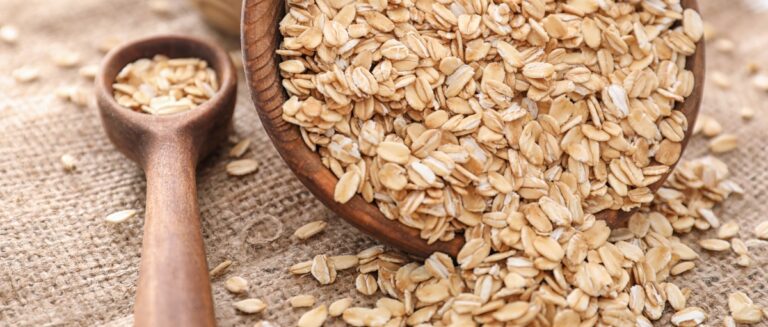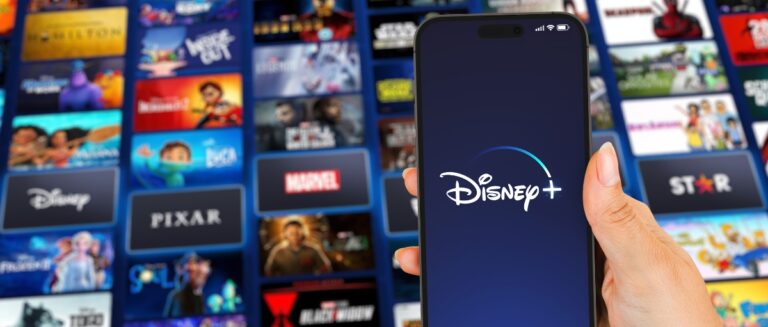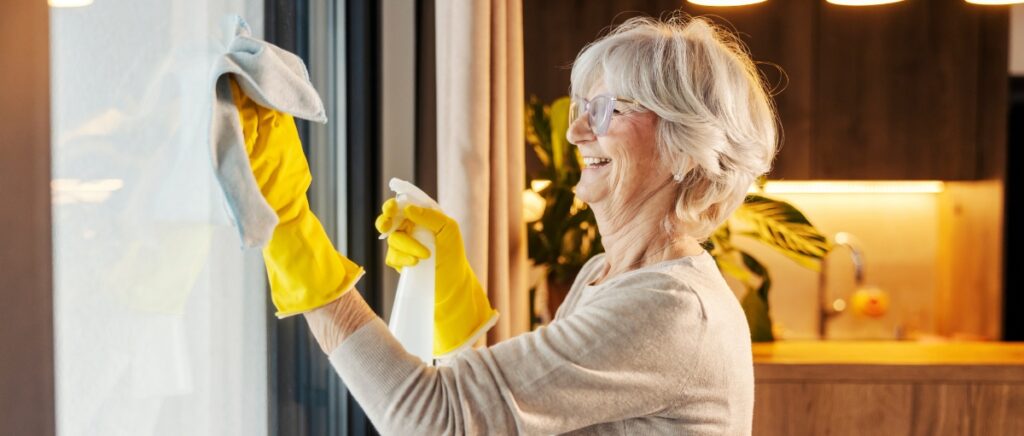You’ve likely spent countless hours over the years keeping your home spick and span. In fact, the average American spends about 6 hours per week cleaning—that’s nearly two full weeks every year devoted to scrubbing, mopping, and tidying!
While cleaning is a necessary part of life, it doesn’t have to be time-consuming. What if we told you that a few clever cleaning hacks could help you streamline your routine and maintain a spotless home with less hassle?
We’ve gathered expert-approved cleaning hacks for every room and task, from quick everyday tips to deep cleaning secrets. Work smarter, not harder, and enjoy a tidy home without sacrificing your free time.
Kitchen Cleaning Hacks
The kitchen is often the heart of the home, but it’s also one of the most challenging rooms to keep clean. The National Library of Medicine states that kitchen sinks and sponges had the highest bacteria content, 64%!
From baked-on oven messes to smelly garbage disposals, tackling kitchen grime can consume your precious time and energy. Try these clever hacks to streamline your kitchen cleaning routine and enjoy a sparkling space with less effort.
Quickly Clean the Microwave
Is your microwave a bit splattered and smelly? Here’s a simple hack to steam clean it in minutes:
- Fill a microwave-safe bowl with 1 cup of water and the juice of one lemon
- Microwave on high for 2-3 minutes until the water boils and the window steams up
- Let stand for 5 minutes, then carefully remove the bowl and wipe down the inside with a damp sponge or cloth
The steam will help loosen any caked-on gunk, while the lemon juice will leave behind a fresh scent. For extra stubborn stains, dip your sponge in the lemon water before wiping.
Remove Oven Grease and Grime
Oven cleaning is a notoriously messy and time-consuming task. Skip the harsh chemicals and use this overnight hack instead:
- Remove oven racks and soak in hot, soapy water
- Make a paste with 1/2 cup baking soda and 1/4 cup water
- Spread paste all over oven interior, avoiding heating elements
- Let sit overnight, then wipe clean with a damp cloth
- For extra grimy ovens, spray with white vinegar before wiping to help dissolve tough stains
Regular use of this hack (every few months) can help prevent major oven messes from building up, saving you time and elbow grease in the long run.
Polish Stainless Steel Appliances
Fingerprints, water spots, and grease splatters can make stainless steel appliances look dull and dingy. Restore their shine with this simple hack:
- Apply a small amount of oil (olive, mineral, or baby oil) to a microfiber cloth
- Rub the oil into the stainless steel in a circular motion, going with the grain
- Use a clean part of the cloth to buff away any excess oil
This hack works because the oil dissolves grime while filling in tiny scratches that can dull stainless steel. For best results, use a very light oil coating and buff thoroughly.
Deodorize the Garbage Disposal
If your garbage disposal is smelling less than fresh, try these quick hacks to banish odors:
- Grind up citrus peels: Toss in lemon, lime, or orange rinds and run the disposal to release a fresh scent.
- Freeze vinegar ice cubes: Pour white vinegar into an ice cube tray and freeze. Grind a few cubes in the disposal to clean and deodorize.
- Use baking soda and boiling water: Sprinkle 1/2 cup of baking soda into the disposal, then slowly pour a kettle of boiling water down the drain. The combo will foam up and clean the blades and pipe.
Repeat these hacks once a week or as needed to keep garbage disposal odors at bay.
Remove Tough Stains from Cookware
Stubborn, caked-on stains can ruin the look of your favorite cookware. Before you resort to scouring, try one of these gentler hacks:
- Baked-on food: Fill the pot or pan with hot water and a dryer sheet. Let soak for an hour, then gently scrub and rinse. The dryer sheet’s fabric softening compounds will help break down stuck-on food.
- Discolored cast iron: Sprinkle a generous layer of salt into the pan. Cut a lemon in half and use the cut side to scrub the pan, squeezing gently as you go. Rinse with hot water.
- Stained enameled cookware: Mix baking soda and hydrogen peroxide into a paste. Apply to stains, let sit for 20 minutes, then scrub gently and rinse. Let the paste sit for up to two hours before scrubbing for tough stains.
Bathroom Cleaning Hacks
Is your bathroom in need of some serious TLC? This hardworking space can quickly become a haven for soap scum, hard water stains, and other grimy buildup. Before you don your rubber gloves and break out the heavy-duty cleaners, try these simple bathroom cleaning hacks, which use supplies you likely already have.
Remove Soap Scum and Hard Water Stains
Soap scum and mineral deposits can leave your sink, tub, and shower doors looking dull and dingy. Here’s how to get them sparkling again:
- For shower doors and curtains: Mix equal parts white vinegar and water in a spray bottle. Spray generously on glass doors or curtains, let sit for 10-15 minutes, then wipe clean with a microfiber cloth or sponge. For heavy buildup, use a soft-bristled brush to gently scrub before wiping.
- For faucets and fixtures: Cut a lemon in half and rub the cut side over hard water stains and soap scum. The citric acid helps dissolve mineral deposits. Rinse with water and buff dry with a soft cloth.
- For showerheads: Fill a plastic bag with white vinegar and secure over the showerhead with a rubber band. Let soak for 2-4 hours or overnight, then remove the bag and run water to rinse. For extra stubborn stains, use an old toothbrush to scrub nozzles before rinsing.
Switch to liquid dish soap or gel to prevent future buildup. These soaps are less likely to leave behind a scummy film than bar soaps. Wiping down surfaces after each use can also help minimize grime.
Disinfect the Toilet and Prevent Rings
Toilet cleaning is rarely anyone’s favorite chore. According to this survey, 88% of people regularly clean their toilets. But these hacks can make this necessary task quick and easy:
- Drop in a denture tablet: Toss a denture cleaning tablet (like Efferdent or Polident) into the toilet bowl and let it dissolve while you sleep. In the morning, quickly scrub the bowl with a toilet brush and flush. The fizzing action and cleaning agents will dissolve stains and help deodorize.
- DIY cleaning powder: In a bowl, mix together 1 cup baking soda, 1/4 cup citric acid (available in the canning section), and 1 tablespoon hydrogen peroxide. Add 15-20 drops of your favorite essential oil if desired. Sprinkle the powder inside the toilet bowl, let it sit for 15 minutes, scrub with a toilet brush, and flush.
To help prevent toilet bowl rings, pour 1 cup of white vinegar into the bowl once a week and let sit for 5-10 minutes before scrubbing and flushing. The vinegar helps break down mineral deposits that can cause unsightly stains.
Freshen Drains and Prevent Clogs
Sluggish drains and clogs are common bathroom woes, but a little regular maintenance can help keep them at bay:
- Monthly drain cleaning: Once a month, mix 1/2 cup baking soda with 1/2 cup white vinegar and pour down the drain. The mixture will foam and fizz, helping to break down small clogs and deodorize pipes. Let sit for 20-30 minutes, then flush with hot water for 2-3 minutes.
- Weekly drain flush: Once a week, boil a large pot of water and carefully pour half down each drain in your bathroom. This helps flush away hair, soap residue, and other debris before they have a chance to form clogs.
- Daily hair removal: To prevent hair clogs, use a drain cover or hair catcher and remove accumulated hair daily. Dispose of hair in the trash rather than flushing it down the toilet.
If you do encounter a slow drain or clog, try plunging first to dislodge the blockage. Use a drain snake before resorting to harsher chemical drain cleaners for extra tough clogs.
Clean Grout and Tile
Dingy grout and tile can make even the cleanest bathroom look grungy. Brighten things up with these easy hacks:
- Baking soda paste: For light stains, mix baking soda and water into a paste, apply to grout lines, let sit for 10 minutes, then scrub with an old toothbrush or grout brush and rinse clean.
- Hydrogen peroxide spray: For tougher stains, mix 1/2 cup hydrogen peroxide with 1 cup water in a spray bottle. Spritz onto grout, wait 10 minutes, then scrub and rinse. Always spot-test first to ensure there’s no discoloration.
- Steam clean grout and tile: For a deep clean, invest in a handheld steam cleaner. The high-temperature steam will loosen dirt and kill mold and mildew without harsh chemicals. Use the brush attachment for extra scrubbing power on grout lines.
Mix up a spray bottle of equal parts white vinegar and water to keep grout looking its best between deep cleans. Mist onto grout after each shower and let air dry to help prevent mildew growth.
Whole House Cleaning Hacks
While some cleaning tasks are room-specific, others pop up throughout the house. Streamline your routine and simplify your life with these whole-house cleaning hacks.
Dust Hard-To-Reach Places
Dust has a sneaky way of settling into even the most awkward nooks and crannies. To make dusting a breeze, try these tips:
- Use a microfiber duster with an extendable handle to clean ceiling fans, light fixtures, and high shelves without hauling out a ladder. Look for one that has a machine-washable head for easy cleaning.
- For tight spaces like air vents or corners, wrap a microfiber cloth around a butter knife to get into the grooves. You can also use an old credit card or gift card.
- Use a soft-bristled paintbrush or make-up brush to dust delicate electronics or knickknacks. The bristles are gentle enough not to cause damage but effective at whisking away dust.
Remove Pet Hair from Upholstery
If you share your home with furry friends, you know the struggle of keeping furniture free of pet hair. Here are a few simple tricks:
- Use a squeegee: Use firm, short strokes to drag a clean, dry rubber squeegee across your couch or chair. The rubber will grab and lift embedded pet hair, which you can then easily vacuum up.
- Try a dampened sponge: For stubborn pet hair, slightly dampen a regular kitchen sponge and rub it across the fabric. The moisture will help the sponge glide and gather more hair. Let the upholstery air dry before sitting.
- Break out the tape: Wrap packing tape or painter’s tape around your hand, sticky side out, and pat the hairy surface. The hair will cling to the tape, making removal a cinch. Just be sure to test an inconspicuous spot first to ensure the adhesive won’t damage the fabric.
Sanitize Kids’ Toys and Sports Gear
With a house full of kids comes an endless assortment of toys and gear needing regular sanitizing. Make quick work of it with these hacks:
- For plastic toys: Toss them in the dishwasher! Load hard plastic toys into the top rack of an empty dishwasher and run a normal cycle with heated drying. The high temps will disinfect and leave toys clean and fresh.
- Bath toys: To clean and prevent mold inside bath toys, soak them in equal parts white vinegar and water for 10-15 minutes. Squeeze out the vinegar solution, rinse with hot water, and let air dry fully before storing.
- Sports gear: To freshen up sweaty sports equipment, spray with a solution of one part rubbing alcohol and two parts water. This will help kill odor-causing bacteria without the need for harsh chemicals. Let air dry completely.
Make Glass and Mirrors Sparkle
Fingerprints, smudges, and streaks can make windows and mirrors look dull and dirty. Restore their shine with these easy tips:
- Streak-free DIY glass cleaner: In a spray bottle, combine 1 cup water, 1/4 cup white vinegar, 1/4 cup rubbing alcohol, and 1-2 drops of your favorite essential oil. Shake well before each use.
- Use coffee filters to wipe glass: Instead of paper towels, which can leave lint behind, use a clean coffee filter to wipe glass after spraying with cleaner. Coffee filters are lint-free and just mildly abrasive for extra sparkle.
- Remove sticker residue: To get rid of sticky price tags or decals on glass, apply a liberal amount of cooking oil or coconut oil and let sit for 10 minutes. Gently peel off the sticker, then wipe away the remaining oil with a coffee filter or soft cloth.
By incorporating these whole house cleaning tips into your routine, you can save time and energy on everyday cleaning tasks and enjoy a tidier space with less hassle.
DIY Cleaning Solutions
One of the best ways to save money and reduce your exposure to harsh chemicals is to make your own cleaning solutions using simple, natural ingredients you likely already have in your pantry. These DIY cleaners are not only effective but also environmentally friendly and customizable with your favorite essential oils.
All-Purpose Cleaner
This versatile cleaner can be used on most hard surfaces, like countertops, tables, and appliance exteriors. In a spray bottle, mix:
- 1 cup white vinegar
- 1 cup water
- 15-20 drops of essential oil (optional)
Shake before each use and store in a cool, dark place. The vinegar smell will dissipate as it dries, leaving behind only the scent of the essential oils. Avoid using on granite or marble, as the acidity can etch the stone over time.
Furniture Dusting Spray
For a natural way to clean and polish wood furniture, mix up this easy spray:
- 1/4 cup olive oil
- 1/4 cup white vinegar
- 10-15 drops of lemon or orange essential oil
- 1 cup water
Shake well before each use and store in a cool, dark place. To use, spray onto a microfiber cloth, not directly onto wood, and buff in the direction of the grain. The olive oil will condition and shine the wood, while the vinegar and citrus oils cut through dust and grime.
Carpet Deodorizer
Freshen up carpets and rugs with this simple, natural deodorizer:
- 1 cup baking soda
- 15-20 drops of essential oil
Mix the baking soda and essential oil in a jar or container with a shaker lid (an empty parmesan cheese container or mason jar with holes punched in the lid works well). Sprinkle liberally over the carpet, let sit for 15-30 minutes, and vacuum thoroughly. The baking soda absorbs odors, while the essential oils leave a pleasant scent behind.
Drain Declogger
Skip the harsh drain cleaners and try this natural solution for minor clogs and slow drains:
- 1/2 cup baking soda
- 1/2 cup white vinegar
Pour the baking soda down the clogged drain, followed by the vinegar. Cover with a stopper or rag, as the mixture will foam and bubble. Let sit for 15-30 minutes, then flush with a kettle of boiling water. Repeat if needed. You may need to use a plumber’s snake before the boiling water flush for tough clogs.
DIY solutions are safe, effective, and affordable alternatives to store-bought cleaners. Always label and store homemade cleaners out of reach of children and pets. You can clean your home with natural recipes without relying on abrasive chemicals.
Cleaning Tools and Gadgets
Having the right tools can make all the difference when cleaning your home efficiently and effectively. From repurposing everyday household items to investing in hardworking gadgets, these cleaning tools will help you get the job done with minimal effort.
Surprising Household Items That Double as Cleaning Tools
Before you go out and buy expensive cleaning tools, take a look around your house. You may already have some surprising multipurpose items on hand:
- Squeegees: Squeegees are not just for shower doors. They are also great for removing pet hair from furniture (see previous section) and lint from clothing. They can also be used to scrape up spills on carpet before blotting.
- Coffee filters: Lint-free, slightly abrasive, and disposable, coffee filters are perfect for shining everything from windows and mirrors to faucets and cabinet hardware. They can also be used to dust plants, electronics, and knickknacks.
- Toothbrushes: Old, clean toothbrushes make excellent detail scrubbers for grout, tile, sinks, and even jewelry. They’re also handy for cleaning around faucets, drains, and other tight spaces where grime tends to build up.
Must-Have Cleaning Products
While fancy, expensive tools aren’t necessary for a clean home, there are a few hardworking gadgets that are worth the investment:
- Microfiber mops: Unlike traditional string mops, microfiber mops have long-lasting, machine-washable pads that grab and hold onto dirt and dust rather than pushing it around. Many also have a built-in sprayer for a one-step mopping solution.
- Handheld steam cleaner: For a chemical-free deep clean, a handheld steam cleaner is a versatile tool to have in your arsenal. Use it to sanitize tile and grout, deep clean carpets and upholstery, de-grease stovetops and ovens, and even freshen up mattresses and curtains.
- Robot vacuum: While a robot vacuum won’t replace a traditional vacuum for deep cleaning, it can significantly reduce the time you spend cleaning floors. Set it to run daily in high-traffic areas like the kitchen and living room to keep pet hair and debris at bay between regular vacuuming sessions.
When to Replace Cleaning Supplies
Knowing when to replace your cleaning tools is just as important as using the right ones. Here’s a general guide:
- Sponges: Replace every 1-2 weeks, or sanitize weekly in the microwave or dishwasher.
- Microfiber cloths: Toss them in the washing machine weekly and replace them when they lose their texture or absorbing ability (usually after about 100 washes).
- Mop heads: Replace every 2-3 months, or when they start to fray or smell.
- Vacuum filters: Replace or wash (if reusable) every 3-6 months to maintain suction and filtration.
- Cleaning brushes: Replace when bristles become worn, bent, or discolored.
By using the right tools and keeping them in good condition, you can streamline your cleaning routine and achieve a sparkling clean home with less time and effort.
Embrace Your Inner Cleaning Genius
Keeping a clean, tidy home doesn’t have to mean endless hours of scrubbing and mopping. By working smarter, not harder, you can maintain a sparkling space with minimal time and effort. The key is to find a cleaning hack that fits your lifestyle and stick with them.
According to survey data released by the American Cleaning Institute, 87% of Americans believe that they feel their best, both mentally and physically, when they have a clean home.
We’ve covered using the right tools and products for cleaning, whether that means repurposing household items or investing in time-saving gadgets. Remember, a clean home is a process, not a destination. Incorporate these hacks into your routine and tackle cleaning tasks a little bit at a time to avoid marathon cleaning sessions.
Armed with this guide, you have all the tools and knowledge to transform your home into a haven of cleanliness and comfort. Try a new hack this week and see how much easier cleaning can be. Your future self will thank you!
Sources
Cleaning Institute. (2018). Survey results: Americans spend nearly six hours each week cleaning—no wonder it’s on their minds. Cleaning Institute. https://www.cleaninginstitute.org/newsroom/releases/2018/survey-results-americans-spend-nearly-six-hours-each-week-cleaning-wonder-it
National Center for Biotechnology Information. (2019). Impact of cleaning activities on health. NCBI. https://www.ncbi.nlm.nih.gov/pmc/articles/PMC6816195/
Cleaning Institute. (2018). ACI national cleaning survey results: Time spent cleaning. Cleaning Institute. https://www.cleaninginstitute.org/newsroom/surveys/2018-aci-national-cleaning-survey-results-time-spent-cleaning
Cleaning Institute.(2024).ACI survey: Nearly 9 in 10 Americans connect cleaning with well-being. Cleaning Institute. https://www.cleaninginstitute.org/newsroom/2024/aci-survey-nearly-9-10-americans-connect-cleaning-well-being











